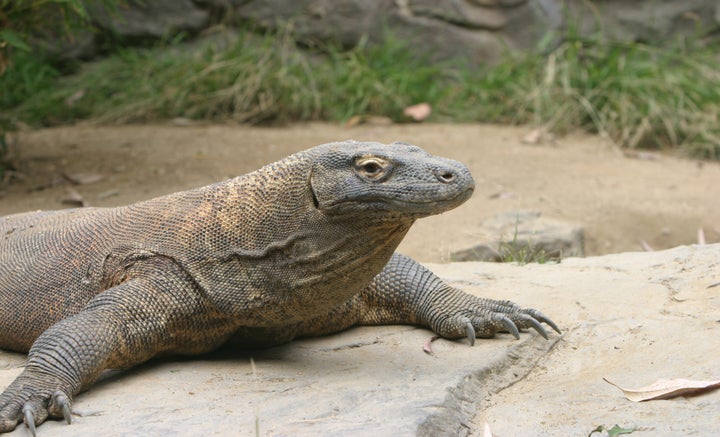
Komodo dragons, the 10-foot, 300-pound lizards found in Indonesia, do not bite humans unless attacked, but when they do, it can prove deadly. Not only is the venom in their teeth potentially fatal, they may also harbor bacteria in their mouths that is dangerous to their prey (typically, deer and pigs).
The question of whether Komodo dragons deliver fatal bacterial infections to their prey when they bite has been somewhat controversial: A 2013 study, refuting previously accepted common wisdom, swabbed the mouths of 16 captive Komodo dragons and found they had less bacteria than other predators, such as lions.
Nonetheless, Komodo dragons in the wild eat carrion and live in environments rich in bacteria yet rarely become infected, though local prey such as water buffalo do. And one reason may be because of a special resistance to dangerous bacteria in the form of cationic antimicrobial peptides, a type of protein that fights off harmful bacteria and that researchers have found in the animals’ blood.
“Komodo dragons are known to harbor high levels of bacteria in their mouths. They don’t suffer from negative effects of bacteria in their own mouths,” said Barney Bishop, one of the study’s authors and an associate professor at George Mason University’s chemistry and biochemistry department.
Using the peptide in the dragon’s blood as inspiration, the researchers designed a synthetic chemical called DRGN-1, which imitates Komodo dragon blood.
As superbugs become more resistant to antibiotics, scientists are turning toward bioprospecting ― or looking to nature for potential medicines. In a recent study published in Biofilms and Microbiomes, researchers from George Mason University found an answer in Komodo dragons, which are native to Indonesian islands.
“We thought the best place to look was animals that are known to thrive under adverse conditions,” Bishop said.
Since the 1940s, antibiotics have reduced deaths from infectious diseases, but they’ve become so widespread that the bacteria the antibiotics are supposed to kill have adapted. Now, every year, at least 2 million people become infected with antibiotic-resistant bacteria, and at least 23,000 people die from their infection.
The military’s Defense Threat Reduction Agency funded this research, hoping the team could look to “extreme animals” to find new ways to defend against infections. This could possibly lead to new drugs to fight superbugs and protect people from bacterial bioweapons.
“We’re in an age of emerging antibiotic resistance,” said Monique van Hoek, one of the study’s authors and an associate professor at George Mason University’s National Center for Biodefense and Infectious Diseases. “We think it’s very important to take these new approaches to discover new ways to kill bacteria. By going into nature, we’re finding a new starting point for this.”
The team found that when DRGN-1 was used to treat infected wounds, these wounds healed significantly faster than untreated wounds or wounds treated with other peptides. That’s in part because DRGN-1 breaks down biofilms, a film of bacteria that sticks to a wound’s surface, which is not addressed by conventional antibiotics.
“It both clears the bacteria out of the wounds and it helps the wounds to heal,” van Hoek said.
The Komodo dragon is currently a vulnerable species with about 6,000 animals remaining, but the researchers collected less than four tablespoons of blood for testing from Tujah, a captive Komodo dragon that lives in the St. Augustine Alligator Farm Zoological Park in Florida. Tujah was not harmed in this process.
“This allows us to test endangered animals or very small animals because we don’t need a very large sample,” van Hoek said.
Bishop and van Hoek, who have been collaborating on antimicrobial discovery research since 2009, have also studied American alligators, Chinese alligators, Siamese crocodiles and saltwater crocodiles for possible treatment.
Right now, the DRGN-1 research is still in the preclinical phase, and the team is at the early stages of trying to commercialize the peptide. But down the road, DRGN-1 may help fight the superbugs of the future.
“When we started this project, it was a high-risk project. The DTRA took a gamble on us,” Bishop said. “The fact that we saw a complexity of peptides from the animals we’re testing on, there’s still a lot to learn. It’s very enriching.”